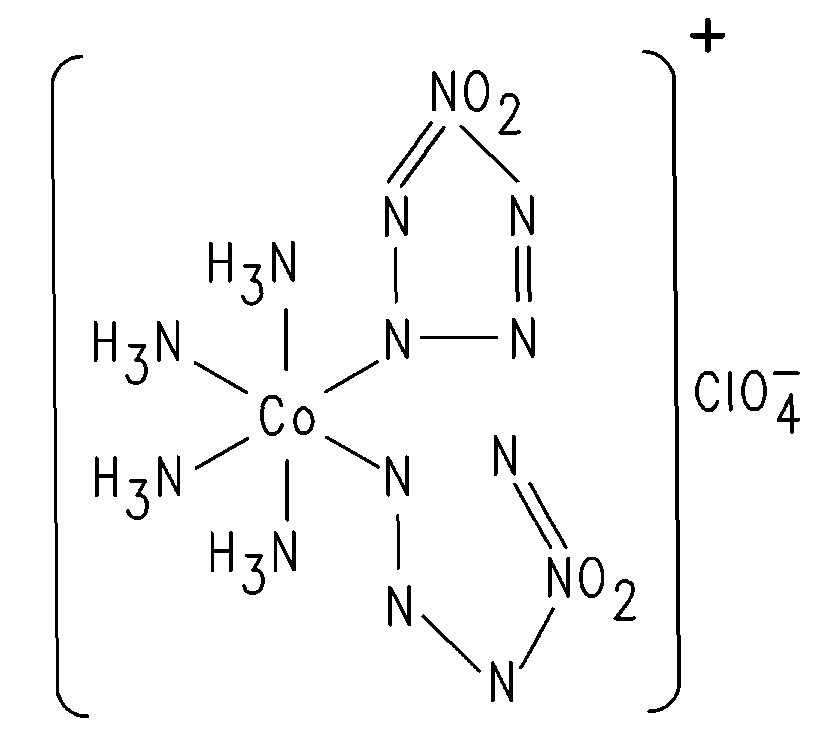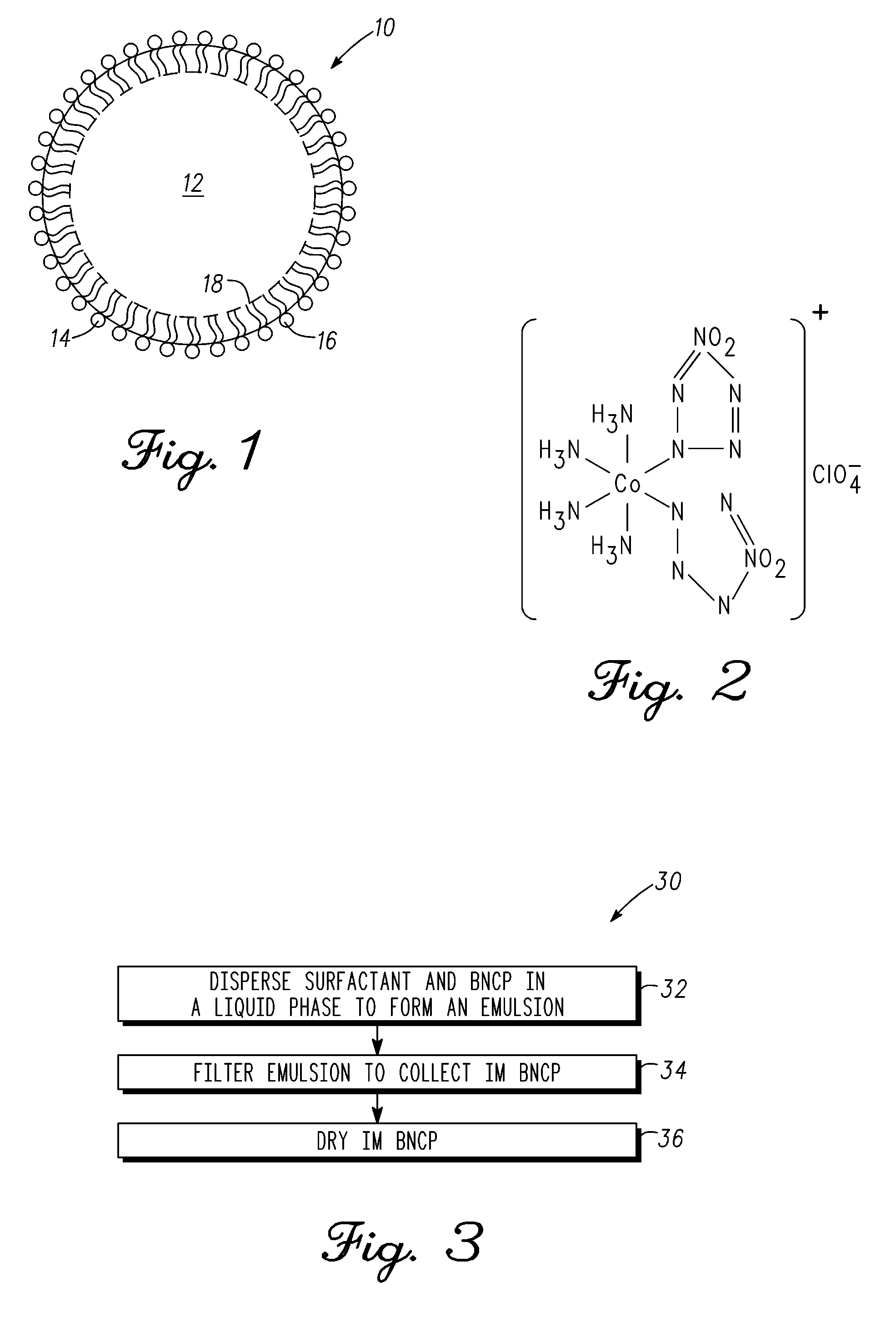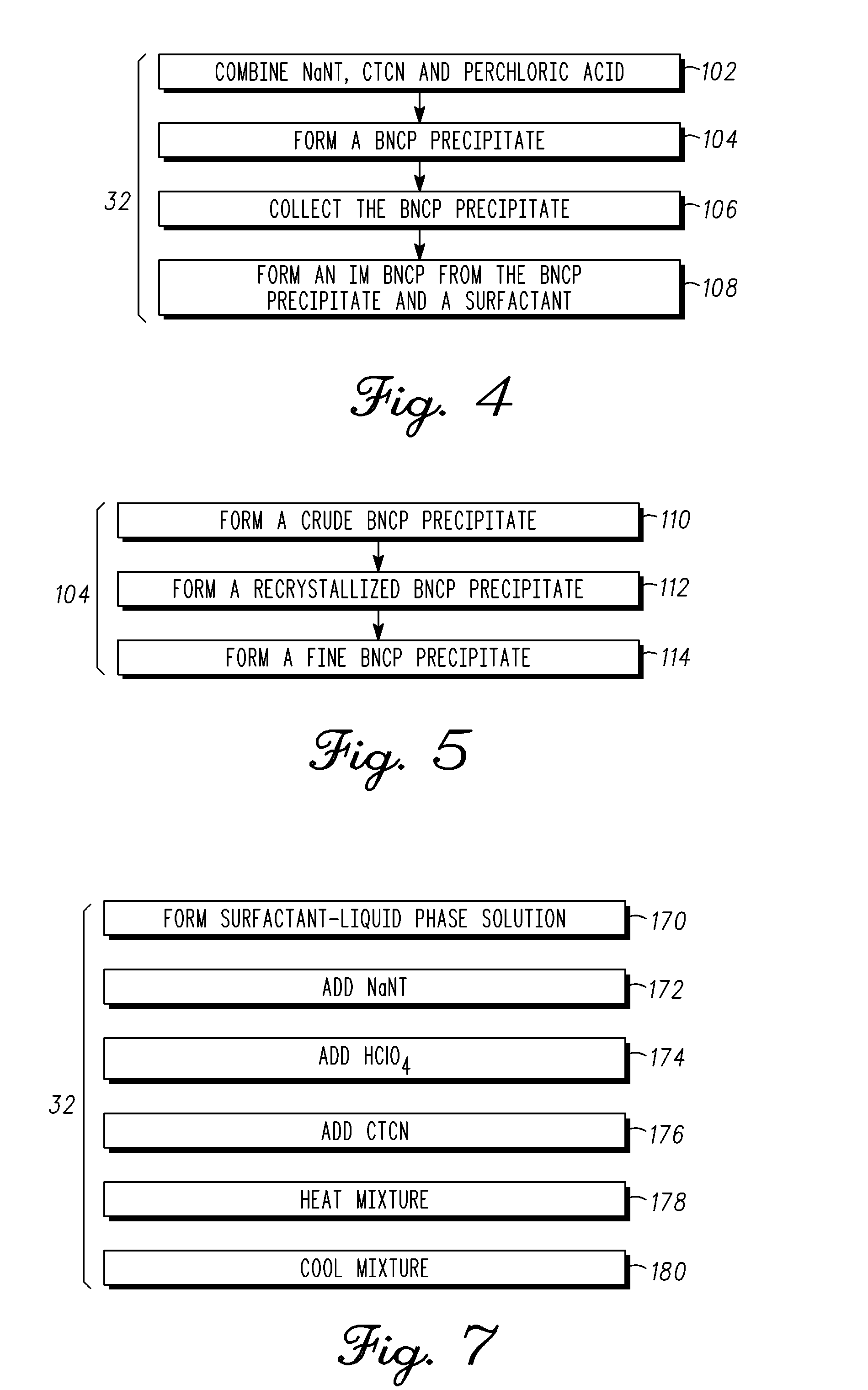Insensitive munition-type BNCP explosive material and methods for forming the same
a technology of insensitive munition and explosive material, which is applied in the field of explosive compositions, can solve the problems of major health hazards and environmental problems of both military and civilian personnel, and is susceptible to sympathetic detonation
- Summary
- Abstract
- Description
- Claims
- Application Information
AI Technical Summary
Benefits of technology
Problems solved by technology
Method used
Image
Examples
example 1
Non-Colloidal Approach
[0033]In a 250 milliliter (ml) beaker, 16.8 grams (g) of NaNT was dissolved in 100 ml deionized water. To the solution, about 0.1 g of 70% perchloric acid was added until the pH of the solution was about 2 to about 3. The solution was stirred and, during stirring, 10 g of CTCN was added to the solution. 70% perchloric acid was added drop-wise to the solution until the pH of the solution returned to 2 to about 3. During this procedure, CO2 gas evolved. Stirring was continued and the solution was heated to about 90.5° C. (195° F.) while the pH was maintained at about 2-3 by the addition of perchloric acid as needed. The solution temperature was maintained at 90.5° C. (195° F.) and a pH of about 2-3 for about 2.5 hours. The solution was cooled to about 48.8° C. (120° F.) and the beaker was placed in an ice bath to cool the solution to −0.5° C. (31° F.). The solution remained at this temperature for one hour during which a crude BNCP precipitate formed. Vacuum filt...
example 2
Colloidal Approach
[0037]In a 500 milliliter (ml) beaker, 0.35 g of Triton® N-101 was dissolved in water. To the low surface tension water, 16.8 g NaNT was added while vigorous stirring was performed. 0.1 g 70% perchloric acid was added to the solution until the pH was about 2 to about 3. While vigorously stirring, 10 g CTCN was added to the solution, which raised the pH of the solution. Stirring was slowed and 70% perchloric acid was again added dropwise until the pH returned to about 2 to about 3, during which time CO2 evolved. Moderate stirring was continued and the solution was heated to about 79.4° C. (175° F.) while the pH was maintained at about 2-3 by the addition of perchloric acid as needed. The solution temperature was maintained at 79.4° C. (175° F.) and a pH of about 2-3 for about 0.5 hours. The solution was cooled to about 48.8° C. (120° F.) and the beaker was placed in an ice bath to cool the solution to −5° C. (23° F.). The solution remained at this temperature for on...
PUM
| Property | Measurement | Unit |
|---|---|---|
| particle diameter size | aaaaa | aaaaa |
| particle diameter sizes | aaaaa | aaaaa |
| particle diameter sizes | aaaaa | aaaaa |
Abstract
Description
Claims
Application Information
 Login to View More
Login to View More - R&D
- Intellectual Property
- Life Sciences
- Materials
- Tech Scout
- Unparalleled Data Quality
- Higher Quality Content
- 60% Fewer Hallucinations
Browse by: Latest US Patents, China's latest patents, Technical Efficacy Thesaurus, Application Domain, Technology Topic, Popular Technical Reports.
© 2025 PatSnap. All rights reserved.Legal|Privacy policy|Modern Slavery Act Transparency Statement|Sitemap|About US| Contact US: help@patsnap.com



